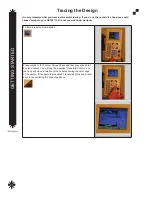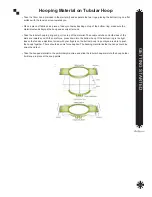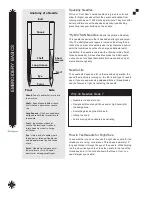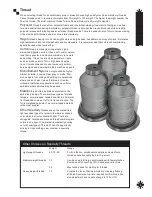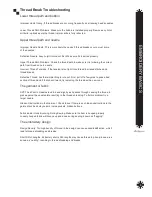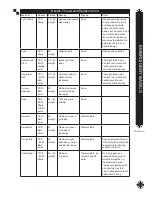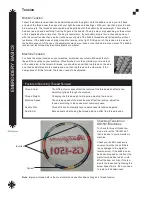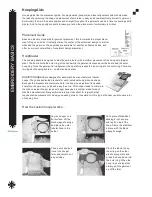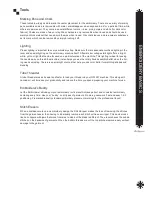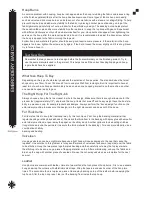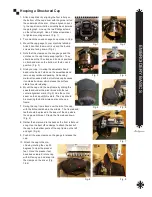
EM
BR
OI
D
ER
Y
B
AS
IC
S
3
Front
Side
Shank
Butt
Point
Shaft
Eye
Long Groove
Short
Groove
Scarf
Anatomy of a Needle
Shank -
Top of needle that inserts into
the machine.
Shaft
- Body of needle below shank.
Shaft thickness determines needle
size.
Long Groove
-
Slit above needle eye,
designed to hold the thread close to
the needle.
Scarf
-
Indentation at back of
needle. The location of scarf and
rotary hook are critical in timing
of stitches.
Eye
-
Hole in end of needle where
thread passes through. Needle size
and type determine size and shape
of eye.
Point
- Needle tip that penetrates
fabric to form a stitch. Shape of
point varies among needle types.
Specialty Needles
Teflon or “Cool-Sew” coated needles are green in color and
allow for higher speeds without the usual heat buildup from
running machines at 1,200 stitches per minute. They also offer
better performance with adhesive and sticky-type backing
preventing less gum build up on the needle.
“Hybrid” SAN Needles
(Special Application Needles)
This needle is special in that it has added strength and versa-
tility. The shaft gradually tapers to increase the strength and
reduce the number of needle breaks. It also features a hybrid
point that combines benefits of a sharp and ballpoint point.
In addition, the needle is coated with a titanium-nitride finish
for extra durability. All these features make the SAN needle
a wise choice for shops that handle both woven and knit gar-
ments interchangeably.
Needle Life
The needle life depends a lot on the machine’s operation, the
speed the machine is running on, the fabric and type of needle
used. If you are experiencing skipped stitches, thread breaks
and the tension is right, try replacing the needle.
How to Test Needle for Right Size
To see whether you have choosen the right size needle for the
thread you are using, cut a piece of thread approximately 10”
long and thread it through the eye of the needle. While holding
the thread vertically and taut, take the needle to the top of the
thread and spin it. It should slip down the thread. If not, you
need a larger eye needle.
Why do Needles break ?
?
• Needle is old and worn out.
• Designs with too many stitches and/or high density for
the design area.
• Something blocking the stitch path.
• Hitting the hoop.
• Fabric moving while needle is penetrating.
Summary of Contents for GS1501
Page 30: ...GETTING STARTED 28 ...
Page 31: ...GETTING STARTED 29 The Control Panel Display ...
Page 62: ...EMBROIDERY BASICS 28 Notes ...
Page 64: ...MACHINE BASICS 2 ...
Page 65: ...MACHINE BASICS 3 ...
Page 70: ...MACHINE BASICS 8 ...
Page 71: ...MACHINE BASICS 9 ...
Page 78: ...MACHINE BASICS 16 Notes ...

